
Overview
Flaw detectors play a pivotal role in ensuring the safety and reliability of aerospace and aviation components. These devices utilize ultrasonic, electromagnetic, or radiographic techniques to detect internal defects, such as cracks, voids, and material inconsistencies, in critical parts like aircraft engines, fuselages, and landing gear. By providing non-destructive testing, flaw detectors aid in identifying potential weaknesses without compromising the integrity of the components. In aerospace and aviation, the application of flaw detectors helps prevent catastrophic failures by enabling timely inspections during manufacturing, assembly, and maintenance processes. This technology is essential for meeting rigorous quality standards, adhering to regulatory requirements, and extending the operational life of aircraft. Rapid advancements in flaw detection techniques, coupled with their portability and accuracy, enhance the industry’s ability to identify even subtle anomalies, thereby enhancing safety and reducing maintenance costs.
Depending on specific features and functions, GAO Tek’s flaw detector are sometimes referred to as Focused Detection Capability, Targeted Analysis Functionality, Anomaly Spotlight Mode, Pinpoint Flaw Feature, Selective Defect Assessment, Localized Inspection, Precise Anomaly Identification, Specific Flaw Detection, Spot Check Capability, Single Point Analysis, Anomaly Localization, Narrow Focus Detection, Singular Defect Emphasis, Anomaly Concentration, Particular Point Assessment, Single Location Analysis, Focaled Flaw Detection, Isolated Flaw Inspection, Part-Centric Examination, Individualized Defect Scrutiny.
GAO Tek’s flaw detector has the following applications in aerospace and aviation:
- Structural Inspections: The flaw detector is used to assess the integrity of aircraft structures, such as wings, fuselages, and landing gear, detecting hidden defects that could compromise safety.
- Engine Components: It examines engine parts like turbine blades and fan disks to identify cracks, corrosion, or other imperfections that could lead to engine failure.
- Weld Integrity: The detector ensures the quality of welds in critical components, guaranteeing that they can withstand the stresses and conditions of flight.
- Composite Material Evaluation: It assesses composite materials used in modern aircraft for any internal flaws or delamination that could weaken the material.
- Maintenance Checks: During routine maintenance, the flaw detector helps technicians identify areas that need attention before they become major issues.
- Quality Control in Manufacturing: It ensures that aerospace components are produced without defects, maintaining high standards in manufacturing processes.
- Safety Compliance: The detector aids in meeting safety and regulatory requirements by thoroughly inspecting components for flaws that might compromise flight safety.
- Non-Destructive Testing: By using non-invasive techniques, the detector evaluates components without causing damage, preserving their usability.
- Crack Detection: It specializes in locating cracks, a critical concern in aviation, ensuring that even tiny cracks are identified before they worsen.
- Corrosion Assessment: The detector identifies corrosion in metal components, helping prevent structural deterioration caused by environmental factors.
- Material Characterization: It analyzes the properties of aerospace materials to ensure they meet performance specifications.
- Aircraft Manufacturing: In the production phase, the flaw detector is used to verify the quality of components before they are integrated into the aircraft.
- Fatigue Evaluation: It helps assess the fatigue life of components, ensuring they can withstand the repeated stresses of flight.
- Advanced Imaging: The detector’s imaging capabilities provide detailed visual information on the nature and location of defects.
- Component Lifespan Extension: By identifying and addressing flaws early, the detector helps extend the operational lifespan of aircraft components.
- Emergency Repair Assessment: In situations requiring rapid assessment and repair, the flaw detector aids in quick decision-making.
- Safety Assurance: Overall, GAO Tek’s flaw detector contributes to ensuring the safety, reliability, and efficiency of aerospace and aviation operations.
More information on flaw detector and their applications in other industries can be found on
This category page lists related products
Structural Testers
GAO Tek’s targeted markets are North America, particularly the U.S., Canada, Mexico, and Europe. Hence, in addition to English, this website gaotek.com is offered in other major languages of North America and Europe such as Spanish, French, German, Italian, Polish, Ukrainian, Romanian, Russian, Dutch, Turkish, Greek, Hungarian, Swedish, Czech, Portuguese, Serbian, Bulgarian, Croatian, Danish, Finnish, Norwegian, Slovak, Catalan, Lithuanian, Bosnian, Galician, Slovene, Latvian, Estonian, Welsh, Icelandic, and Irish.
Complying with Aerospace and Aviation Standards
GAO Tek’s flaw detector comply or help our customers comply with the aerospace and aviation standards such as:
- Quality Assurance
- Regulatory Compliance
- Enhanced Safety
- Efficient Inspections
- Non-Destructive Testing (NDT)
- Reduced Downtime
- Longevity of Components
- Consistent Performance
- Data-driven Decisions
- Preventive Maintenance
- Aircraft Reliability
- Mitigation of Risk
- Industry Endorsement
- Certification Requirements
- Vendor Audits
- Cost Efficiency
- Customer Confidence
- Risk Management
- Innovation Alignment
- Continuous Improvement
Complying with Government Regulations
GAO Tek’s flaw detector comply or help our customers comply with the U.S. government regulations such as
- Federal Aviation Administration (FAA) Compliance
- Department of Defense (DoD) Standards
- Transportation Security Administration (TSA) Guidelines
- National Institute of Standards and Technology (NIST) Requirements
- Federal Acquisition Regulations (FAR) Adherence
- Occupational Safety and Health Administration (OSHA) Regulations
- Environmental Protection Agency (EPA) Directives
- National Aeronautics and Space Administration (NASA) Standards
- Federal Communications Commission (FCC) Rules
- Department of Homeland Security (DHS) Mandates
GAO Tek’s flaw detector comply or help our clients comply with the Canadian regulations such as
- Transport Canada Civil Aviation (TCCA) Standards
- Canadian Airworthiness Directives (ADs)
- Canadian Environmental Protection Act (CEPA) Guidelines
- Canadian Aviation Regulations (CARs) Compliance
- Canadian Space Agency (CSA) Requirements
- Canadian Transportation Agency (CTA) Regulations
- Health Canada Safety Guidelines
- Canadian Nuclear Safety Commission (CNSC) Protocols
- Canadian Radio-television and Telecommunications Commission (CRTC) Rules
- Canadian Food Inspection Agency (CFIA) Regulations
GAO Tek’s flaw detector comply or help our clients comply with the Mexican regulations such as
- Mexican Civil Aviation Authority (AFAC) Standards
- Mexican Environmental Regulations
- Federal Consumer Protection Agency (PROFECO) Guidelines
- Mexican Aerospace Industry Regulations
- Federal Commission for the Protection against Sanitary Risk (COFEPRIS) Requirements
- Mexican Communications and Transportation Regulations
- Mexican Nuclear Safety Regulations
- Federal Telecommunications Institute (IFT) Rules
- Mexican Labor and Employment Laws
GAO Tek’s flaw detector comply or help our clients comply with the European regulations such as
- European Aviation Safety Agency (EASA) Standards
- European Union Aviation Safety Regulations (EU-ASR)
- European Chemicals Agency (ECHA) Guidelines
- European Space Agency (ESA) Requirements
- General Data Protection Regulation (GDPR) Compliance
- European Environmental Directives
- European Telecommunications Standards Institute (ETSI) Regulations
- European Food Safety Authority (EFSA) Guidelines
- European Medicines Agency (EMA) Regulations
Case Studies of Flaw Detector in Aerospace and Aviation
Flaw detector are sometimes called as Defect Identifiers, Anomaly Detectors, Flaw Finders, Imperfection Locators, Fault Inspectors, Discrepancy Scanners, Aberration Checkers, Inconsistency Detectors, Irregularity Scanners, Weakness Detectors.
Here are some practical examples of using flaw detector in aerospace and aviation:
Flaw detectors are used to scan the fuselage for hidden cracks, corrosion, and defects, ensuring the structural integrity of the aircraft.
Critical engine parts like turbine blades undergo flaw detection to identify any flaws that might lead to engine failure under stress.
Flaw detectors assess the quality of welds in components like landing gear, ensuring they can withstand operational stress.
Flaw detectors scan composite materials in aircraft wings and structures to locate internal defects that could compromise strength.
During scheduled maintenance, flaw detectors help technicians assess parts for any emerging defects before they become major issues.
Flaw detectors are employed on newly manufactured components to ensure they meet stringent quality standards before assembly.
They check avionic systems for flaws, ensuring proper functionality and reliability of critical electronics.
Flaw detectors locate even minute cracks in components like landing gear struts, preventing catastrophic failure.
Detecting corrosion in metal parts helps prevent structural degradation caused by environmental factors.
After repairs, flaw detectors verify the integrity of the repaired area before the aircraft is returned to service.
By detecting signs of fatigue in components like control surfaces, the detectors help manage component lifespans.
Flaw detectors are used to assess the condition of fuel tanks without the need for invasive methods.
They ensure the integrity of fasteners that hold critical components together, avoiding potential failures.
Flaw detectors examine bolt holes in components, guaranteeing they meet safety standards.
They identify any imperfections or flaws in cockpit windows to ensure clear visibility.
Flaw detectors locate delamination within composite panels, vital for maintaining structural integrity.
In cases of emergency landings, flaw detectors assess landing gear components for damage before further flights.
They locate defects in turbine blades to prevent imbalance or damage during operation.
Flaw detectors assess pressure vessels in aircraft systems, ensuring they can handle various pressures safely.
They help ensure the safety and quality of cabin components like seats, panels, and storage compartments.
Detecting flaws in riveted connections prevents potential issues with structural stability.
Flaw detectors assess the rotor blades of helicopters for hidden issues affecting flight performance.
Unmanned aerial vehicle (UAV) components undergo flaw detection to guarantee safe operation.
Flaw detectors assess control surfaces’ integrity to maintain precise aircraft maneuverability.
For older aircraft, flaw detectors play a vital role in evaluating the condition of components and ensuring continued airworthiness.
GAO RFID Inc. RFID Hardware, a sister company of GAO Tek Inc., is ranked as a top 10 RFID supplier in the world. Its RFID, BLE, and IoT products have also been widely used in aerospace and aviation
Use of Flaw Detector with Leading Software and Cloud Services in Aerospace and Aviation
GAO Tek has used or has facilitated its customers to use GAO’s flaw detector with some of the leading software and cloud services in their applications. Examples of such leading software and cloud services include:
- MATLAB
- LabVIEW
- Python
- AWS (Amazon Web Services)
- Microsoft Azure
- Google Cloud Platform
- MATLAB Simulink
- NI TestStand
- Visual Studio
- OpenCV
- TensorFlow
- PyTorch
- ANSYS
- SolidWorks Simulation
- COMSOL Multiphysics
- Autodesk Fusion 360
- PTC Creo Simulation Live
- Zemax OpticStudio
- CATIA
- SIMULIA Abaqus
GAO Tek’s flaw detector and their applications in other industries are listed on this page
Other related products can be found at this category page
Meeting Customers’ Demands
Large Choice of Products
In order to satisfy the diversified needs of their corporate customers, GAO Tek Inc. and its sister company GAO RFID Inc. together offer a wide choice of testing and measurement devices, network products, RFID, BLE, IoT, and drones.
Fast Delivery
To shorten the delivery to our customers, GAO has maintained a large stock of its products and is able to ship overnight within the continental U.S. and Canada, and fast delivery to Mexico and Europe from the nearest warehouse.
Local to Our Customers
We are located in both the U.S. and Canada. We travel to customers’ premises if necessary. Hence, we provide a very strong local support to our customers in North America, particularly the U.S., Canada and Mexico and Europe. Furthermore, we have built partnerships with some integrators, consulting firms and other service providers in different cities to further strengthen our services. Here are some of the service providers in aerospace and aviation we have worked with to serve our joint customers:
- Product Diversity
- Efficient Delivery
- Localized Support
- Strategic Partnerships
- Aerospace and Aviation Engagement
- Client-Centric Approach
- Integrated Solutions
- Responsive Shipping
- Global Reach
- Enhanced Service Ecosystem
- Focused Industry Approach
- Tailored Consultation
- Cutting-Edge Technologies
- Fulfilling Specialized Needs
GAO Has Many Customers in Aerospace and Aviation
The products from both GAO Tek Inc. and GAO RFID Inc. have been widely used in aerospace and aviation industry by many customers, including some leading companies. Here is more information on applications of GAO RFID Inc.’s products in aerospace and aviation.
Manufacturing Industry | RFID Solutions
Here are some of the leading companies in aerospace and aviation:
- Boeing
- Lockheed Martin
- Northrop Grumman
- Raytheon Technologies
- General Dynamics
- General Electric Aviation
- SpaceX
- Collins Aerospace (a Raytheon Technologies company)
- United Technologies Corporation (UTC)
- Pratt & Whitney
- Textron Aviation
- Gulfstream Aerospace (a General Dynamics company)
- Spirit AeroSystems
- Honeywell Aerospace
- L3Harris Technologies
- Garmin
- BAE Systems Inc.
- AeroVironment

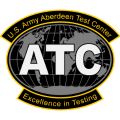

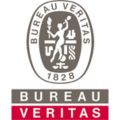





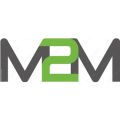





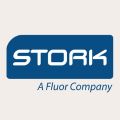
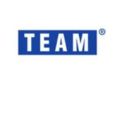
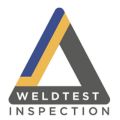
Contact Us
If you are interested in our products, services or partnering with us, please feel free to contact us by filling out this form:
or email us at sales@gaotek.com
